Organic grower spreading the word on heritage fruit
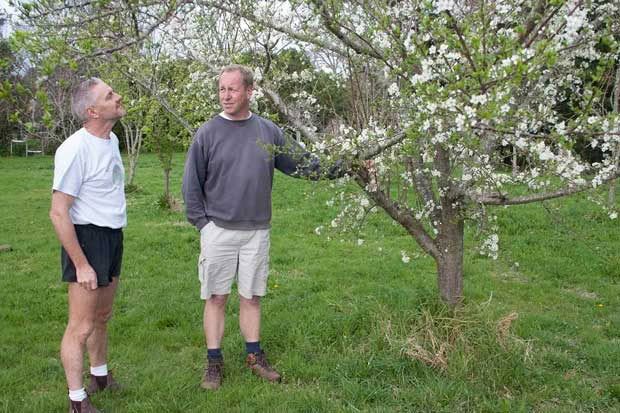

An orchard of organic heritage apples, plums and pears is proving an educational experience for its owners and their community.
Who: Robert Velseboer & Murray Joyce
Where: Riverhead, 20km north-west of Auckland
What: 7.3ha
Web: www.organicseedlings.co.nz
When Murray Joyce’s grandfather first bought what would become the family farm at Riverhead in 1919, it covered 25ha (62 acres) and he struggled to make it profitable running cattle, tending geese and other farming enterprises.
Murray and his partner Robert now own a slice of the original farm, with Murray’s brother as a neighbour on one side, his sister on the other.
They still run a small herd of beef cattle to graze much of their 7.3ha (18 acres), but are concentrating on the crops they love best. That’s three acres of heritage apple, pear and plum trees, and an organic seedling business. Murray says they’ve been fortunate to find two great niche businesses.
“We’re very lucky that it’s our turn, and you can do things with a small area – it has to be intense but Rob and I are proof that you can do it.”
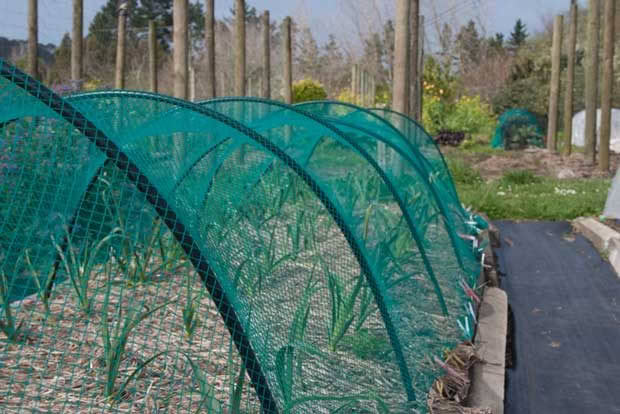
Intense is an understatement. Once you get past the tunnel house, full of their organically-grown vegetable and herb seedlings business, you head up past the house to their orchard. On just over a hectare there are around 200 plum trees (40 varieties), about 200 apple trees (52 varieties), and over 100 pear trees (40 varieties).
“Our original thought was to try and save the old fruit trees,” says Rob, who also works as an organic horticulture tutor for Northtec. “Just about everything we’ve got here is pre-World War 1, before they started to muck around with fruits trees for the overseas markets. All the trees here are really old heirloom varieties; they come from different places, and we’ve grafted a few ourselves, but we know each of the trees and their characteristics.”
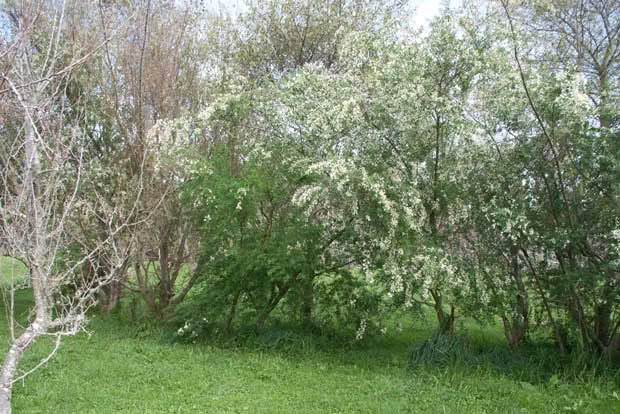
Many of the trees came from Koanga Gardens and Kay Baxter – heritage vegetable and fruit tree guru, and founder of the Koanga Institute – is a name that crops up periodically throughout the day.
“We’re so thankful to her for inspiring us initially,” says Murray. “We have a collection of her pears from the Whanganui River trip she did. They didn’t like growing up at Koanga, but we still have all 22 varieties of un-named pears. There’s probably 10 of them which we can eat; the other 10 look amazing but don’t really taste that good, so we believe they were for perry (pear juice cider).”
With all these trees, Rob and Murray have fruit to sell at their local farmers’ market from early summer right through to late autumn, and it’s a big crop says Rob.
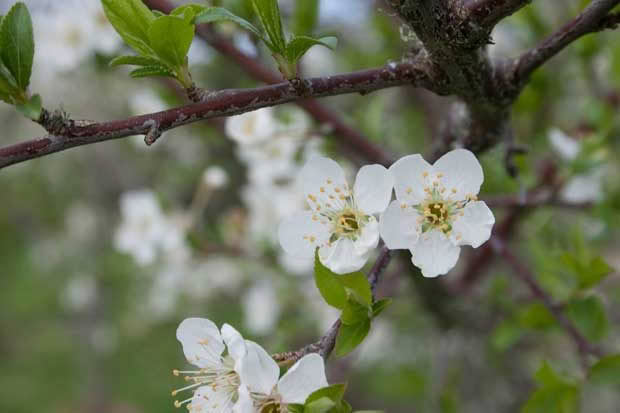
“We pick at least 100kg (of apples) a week – at least – and the same with plums, we sell at least 100kg a week of plums, and it goes on for a long period. For apples, it’s mid-December – “Early Strawberry” – through to April. For the plums, we get them from probably early December right through to late March for the last one, “Kereru Gold”.”
The first few months selling their fruit was more difficult than they thought. That’s where the education of their customers began, says Rob.
“When we first started, we couldn’t sell our apples or pears because people thought they looked funny, and they weren’t Pacific Rose. They’d ask what the variety was, and if they didn’t know it, they didn’t want it. But in the last two years, something has changed, we have a demand now for our fruit, they’re willing to try it.”
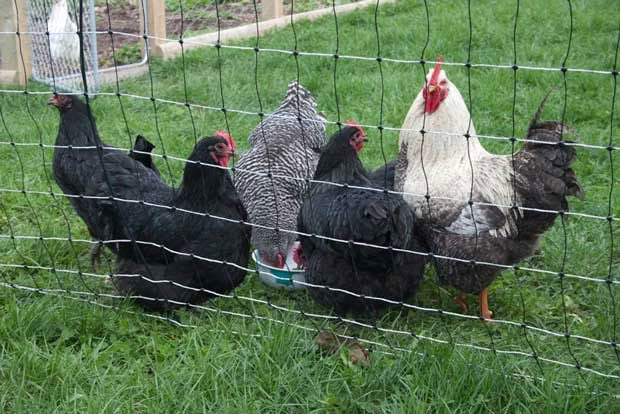
That meant a second education, says Murray, as they taste-tested variety after variety every market day.
“Unfortunately, we only have two or three, maybe four trees of each variety, so once they’re finished over a couple of weeks, we move onto the next one, but a lot of people are like ‘we love it so much, have you got any more?” Well, no we don’t. Yes, we would like to build up a few more of each variety, but it’s hard.”
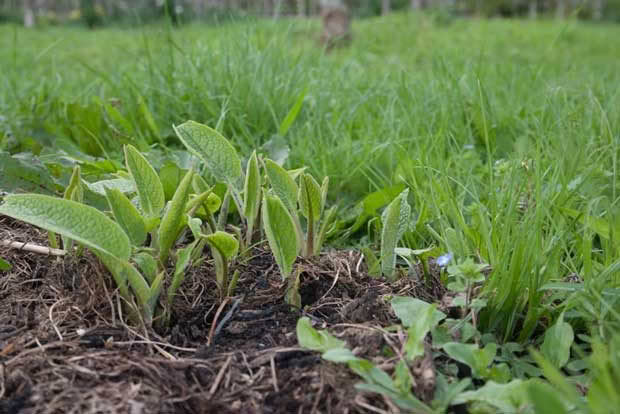
Now their customers’ palates are more educated, Murray and Rob are working on encouraging people to try other, more unusual fruit, like cooking apples – “they’re getting very popular, because no-one grows them” says Murray – and russet varieties. Russet apples have skin that turns slightly brown, slightly rough and are renowned for their beautiful sweet flavour and scent.
“All our apples are different, and we’ve got a lot of the old russet apples, which people didn’t want to touch at first. But these apples are very good for people with diabetes because they can help control sugar levels in the body, and they taste great as well.”
Because they have varieties coming on all the time, Rob and Murray have no need for big chillers or storage facilities. They only sell fresh fruit, packed with great nutritional value says Rob.
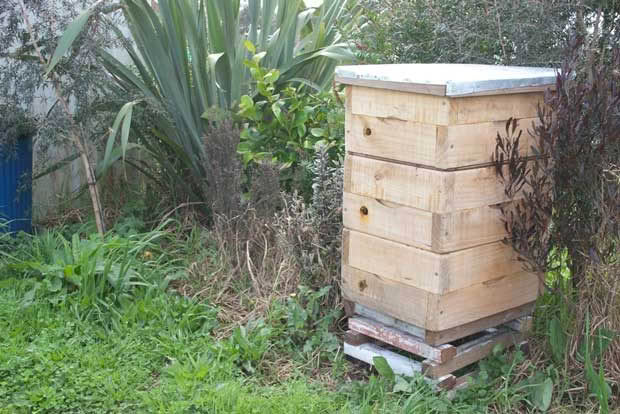
“Our philosophy is we pick the night before and we sell the next day; we don’t believe in storing fruit, its got to be eaten fresh from the tree, and its got to be ripe – that’s a point of difference for us, it’s tree-ripened. The only exception is pears, which you can’t ripen on the tree.”
This year, Rob and Murray will also be able to show customers that their fruit are perfectly ripe, and at their sweetest and most nutritious, thanks to Rob’s new handheld digital refractometer which measures the brix level (the percentage of dissolved sugar) of fruit and vegetables. Rob has already taken levels from supermarket fruit and veges, finding they rate at 3-5%, while their own fruit – picked fresh from the tree – is at 10-12%.
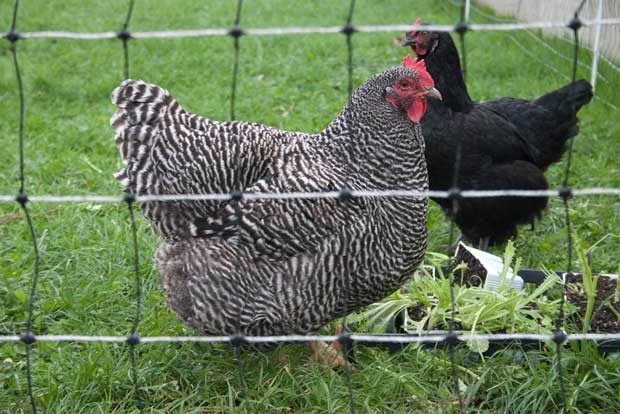
Being certified organic means Rob and Murray use an organic rock dust-based fertiliser on their orchard, which they believe grows more nutritious fruit.
“What’s put into the fruit is what you eat, and you’re getting all that goodness,” says Murray. “We have a theory that while people are eating more, they’re actually starving themselves nutrient-wise; fruit gets picked unripe, or it’s a hybridised variety that stores for ages – eight or nine months – and it loses its goodness.”
However, there’s no accounting for people’s habits, which seem to be related to fruit size.
“We’ve got some (plums) here, they’re huge ones, but the smaller ones are really tasty and delicious, and we believe more nutritious but people see the modern varieties and they’re big, so they go for that.
“We’ve also got Seckel pears, which is an early American pear – they call it the honey pear – and we took that to market this year. It’s usually only a pollinator (and not picked), but it’s really sweet, and it’s a great size for kids to eat. There was a huge interest in that, we just couldn’t grow enough so we’ve put in a few extras for this year.”
Despite all the fruit trees, and a tunnel house full of BioGro-certified vegetable and herb seedlings, Rob and Murray manage the farm work with help from Rob’s dad Jack.
“Were forever grateful to Rob’s Dad,” says Murray. “He’s 71, and he’s a jack of all trades, he does a lot of the mowing (around the orchard). He put in all the fans (in the tunnel house) that help keep us cool, and when we had terrible frosts last year, the fans came on at 5ºC, which is enough to keep the frost away.
“This shed here holds our Dalton’s organic potting mix, and you can push the whole roof back. (Jack) designed and built it for us, the roof goes back so a truck can just come in and dump it straight in.”
Rob and Murray are incredibly passionate and highly ambitious about what they can accomplish on their block and are prepared to work hard for it. Things haven’t always been easy, and it’s certainly a long way from where they started, in a townhouse in an Auckland suburb, both working at Auckland Airport.
“I wanted to come up to the family farm, and it was either move (to another house) or buy our own block, and it was a difficult decision because this was my mother’s family farm,” says Murray. “But its finally all come out, come together.
“Life is a journey and it’s what you make it. We’re here to look after this land – we’re only here to borrow it, and hopefully, leave it better for those who come after.”
“We love apples, we love plums, we love pears,” says Rob, and it shows.
AN ORCHARD SURVIVAL GUIDE
1. Shelter from the wind
When Rob and Murray first took over the farm, the first thing they planted was shelter trees. There was a quick-growing hedge of tagasaste (tree lucerne) and alders right in the orchard, with the second line of defense over 100m away, long double rows of bigger, slower-growing pine and poplar.
“When we first started here, being a bare cow paddock, the wind – which comes from Muriwai – would come racing across, so we needed a quick-growing hedge,” says Murray. “We planted two rows of tagasaste, and it has proven absolutely fantastic because it is so quick-growing.”
So quick, the trees are only five or six years old but already slowly dying off having had an infestation of lemon borer hit them as they reached the end of their lifespan, but they are still proving very useful says Murray.
“The firewood is great from it, it’s so hard. We burn it, and we chip it to make the most beautiful mulch. The bumblebees love (the flowers) too.”
2. Orchard design
Rob and Murray’s orchard is certified organic by OrganicFarmNZ, so they’ve experimented to find what varieties of fruit are the hardiest in their area.
“For example, we haven’t bothered much with peaches,” says Murray. “It’s just organically very difficult to manage them. We’ve got a few for our own use – Paragon, and we’ve got a white peach, Orion.
“It depends on the season too,” says Rob. “Some years, where you’ve got a good, warm spring, it’s great for peaches, when it’s a cold spring, it’s not. You need winter chill (for peaches), and trees that are far removed from their preferred bioregion just don’t do as well so we don’t grow them.”
3. Orchard additions
Every tree in their orchard has spring bulbs and comfrey planted in a ring around it. The bulbs die down allowing the comfrey to come away, which then bring up nutrients via their deep roots; the comfrey then dies down, the leaves acting as a nutritious, on-site, mulch-come-compost says Murray.
“The only fertiliser we bring into the orchard is this, see this black stuff here? It’s a volcanic rock dust from Agrissentials, and it’s our only feed. This stuff is 50% rock dust, 25% fish and 25% seaweed, so its got all the minerals the plants need – we buy it by the tonne.
“We also encourage cleavers (bidibids, a sticky climbing weed) to grow inbetween because its high in silica, which feeds the tree when it breaks down, and we have borage (flowers encourage predator insects) and a few wild flowers, but apart from that they get no other food.”
Just half a shovel-full of the volcanic rock dust is spread around the dripline of each tree in a year, to be washed into the soil by the rain. Rob and Murray say their trees have been fed like this since planting, and every year they need to thin heavily because the trees are dripping in fruit.
They’ve also discovered an organic product used in vineyards is excellent for organic fungal control in their trees. Vinvax is used in vineyards on pruning wounds, as a living barrier to stop harmful fungi from infecting a grapevine.
“You keep it in the fridge, and you spray it on your trees,” says Rob. “The fungus stay away from the tree for the whole year, it keeps away things like cankers and silverleaf, so we see that as modern technology helping us. The only thing is it’s $135 a bag, and it’s a small bag.”
4. How to beat codling moth
Rob and Murray use a light trap to catch codling moth, something Rob read about in a book.
“I can’t imagine in a large scale orchard it would work, but for us it’s great. The moths come in to the light, and we put some dish washing liquid in a dish under it, and that takes care of most of our issues. It’s on from 6pm until morning, and we monitor it every day.”
The old pool light is fitted with an eco-bulb, and stands around 1.5m off the ground, the height at which codling moths fly. It switches on automatically, and while it is powered by electricity, Rob says if he had to do it again, they would have it hooked up to a solar panel.
“On a windless night, moths come from miles around, and we also get a lot of mosquito larvae too. We used to get a little bit of codling moth, but we’ve only had one apple or so affected by codling moth (last) year, and this year we’ve seen almost none, so I think – hopefully – we’ve broken the cycle.”
5. Do what’s easiest
As you walk to the orchard, there are posts and wires running down one side, a trial of espaliered apples.
“We trialled 54 apples on this, so we proved you can grow 54 apples in a small area, like grapes,” says Murray. “But they’re growing on dwarf rootstock, and they need a lot of attention, they need irrigation. They might suit a home garden situation if you’ve got a wall, and can give them water and more attention (but) we’re concentrating on our main trees, on “Northern Spy” rootstock because they grow big and strong, and we have a clay-based soil, so it suits our conditions much better.
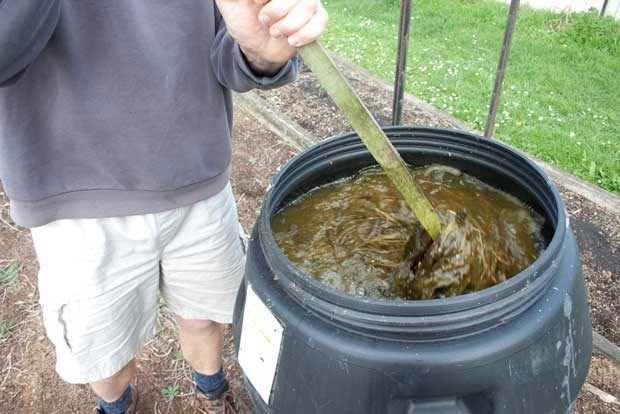
Rob & Murray’s DIY Fertiliser
Alongside the orchard is a huge vegetable garden, one of two on the property. Rob grows tomatoes, beans, heritage garlic (purple), parsnips, asparagus and a huge range of other vegetables.
Dotted about the place are 200-litre plastic drums. These hold a surprisingly non-smelly, home-made mix of rotting leaves and fish, and is the only other fertiliser used on the property, specially made for the vegetable garden.
“We make our own fertiliser using comfrey, nettles (grown in a bathtub so they don’t become invasive) and cleavers, – it’s about 80% comfrey leaves, 10% stinging nettles and 10% cleavers, then we fill it with water and let it rot down.
“In this barrel, we’ve got some fish carcasses too, but we’ve added an enzyme from (biodynamic farmer and Lifestyle Block columnist) John Pearce from Shelly Beach Farm, and it eats all of the stuff out. So you can see it does smell, but with the enzyme, it’s not too bad. This will end up being our tomato food, and go on the beans, but we’ll dilute it, about one bucket to six.”
In summer, it takes about 2-3 weeks for the ingredients to rot down, longer in winter. Rob uses a big stick to stir each covered barrel every so often, and the watered-down end product is about the colour of weak tea.
“We’ve got five barrels going most of the time, and it’s foliar or ground application – we never it put it on the leaves of our tomatoes. We do it about once a week during summer, so everything gets a good doseage of it.”
VARIETY IS THE SPICE OF LIFE
Tamaki Special
Eating plum
“This is my favourite plum,” says Rob. “They’re large, red-fleshed – they’re known as blood plums – and they last really well, they can stay on the tree for up to three weeks, and they store really, really well.”
Duff’s Early Jewel
Pollinator plum
“This is one of our pollinators, by the driveway,” says Muray. “Duff’s Early Jewel doesn’t need us much, so we don’t really worry about it.”
Mayflower
Cooking apple
“This is a very, very nice apple because it remains whole when you cook it, so you can cook it, then slice it,” says Murray, “It seems to have been brought here in the 1800s, from the UK, and the lady who brought it with her arrived on, you guessed it, the Mayflower.”
The Damsons
Jam-making plums
Rob and Murray have a lot of damson plum trees, although they originally cut out some a couple of years ago, as no-one seemed to want to make jam anymore says Murray.
“Damsons make great jam, and we had six of them a few years ago, but I cut two out, and now we’ve gone back up to five because we’ve got such a following. Rob does classes on preserving, and so many people want to make plum jam. You know, damsons, we couldn’t give them away, and now we’re selling kilos at a time.
“We’ve also got some pickle plum trees so we’re going to try to pickle some plums – that’s just for personal use only, imagine the health and safety, we’re not even going there, we’ll stick to fresh produce.”
Other varieties
Oratia Beauty and Albany Surprise are two locally-grown apples. Peasgood Nonsuch is a big, great-tasting cooking apple. Rob and Murray do have the ever-popular Granny Smith, but also have its forerunner, Giant Geniton (a small, more red apple that tastes similar).
Love this story? Subscribe now!
 This article first appeared in NZ Lifestyle Block Magazine.
This article first appeared in NZ Lifestyle Block Magazine.
